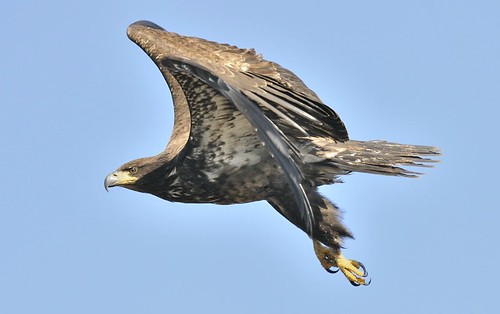
Bald eagle counting season is in full swing for the U.S. Forest Service, specifically in California and Washington.
In California, the San Bernardino National Forest kicked off its 34th season of counting bald eagles in the San Bernardino and San Jacinto Mountains Dec. 17, when volunteers and biologists counted nine eagles. In fact, the San Bernardino Mountains are home to the largest bald eagle populations during the winter in Southern California. The eagle season typically lasts from late November through early April.
Using radio tracking devices and satellite transmitters, Forest Service scientists have researched eagles’ regular movements among mountains and lakes since the early 1990s in the San Bernardino Mountains. They discovered that some eagles consistently return to the San Bernardino Mountains every year while others regularly move between specific areas within the mountains.
Additionally, the agency’s scientists learned that some of the mountains’ eagles travel as far as to Montana, Wyoming, Idaho, and as remarkably far as northwest Canadian provinces such as Alberta. Flying this far north from the San Bernardino Mountains is roughly 2,000 miles.
California is not alone in its quest to search for bald eagles. Skagit River in Washington is home to one of the largest wintering bald eagle populations in the “Lower 48.”

Near Mt. Vernon, Wash. on the Skagit River Bald Eagle Natural Area, the Forest Service, along with other state and federal agencies, teams with volunteers to count bald eagles. Specifically, the Forest Service works with about 50 dedicated volunteers, including some who have volunteered for more than 10 years.
“We have a lot of fun out there,” said Tanya Kitterman, Forest Service forestry technician and coordinator of the all-volunteer Skagit Eagle Watchers. “It’s the eagles that draw people out of their homes to take a trip up the river into the foothills of the Cascades. Once they get out into the fresh winter air, and hopefully see eagles up close, they begin to feel a more personal connection to their public lands.”
Hour-long eagle counting sessions will resume on the San Bernardino and San Jacinto Mountains on Jan. 14, Feb. 11 and March 10. For information on helping the Forest Service count eagles during this season, contact your local national forest.
